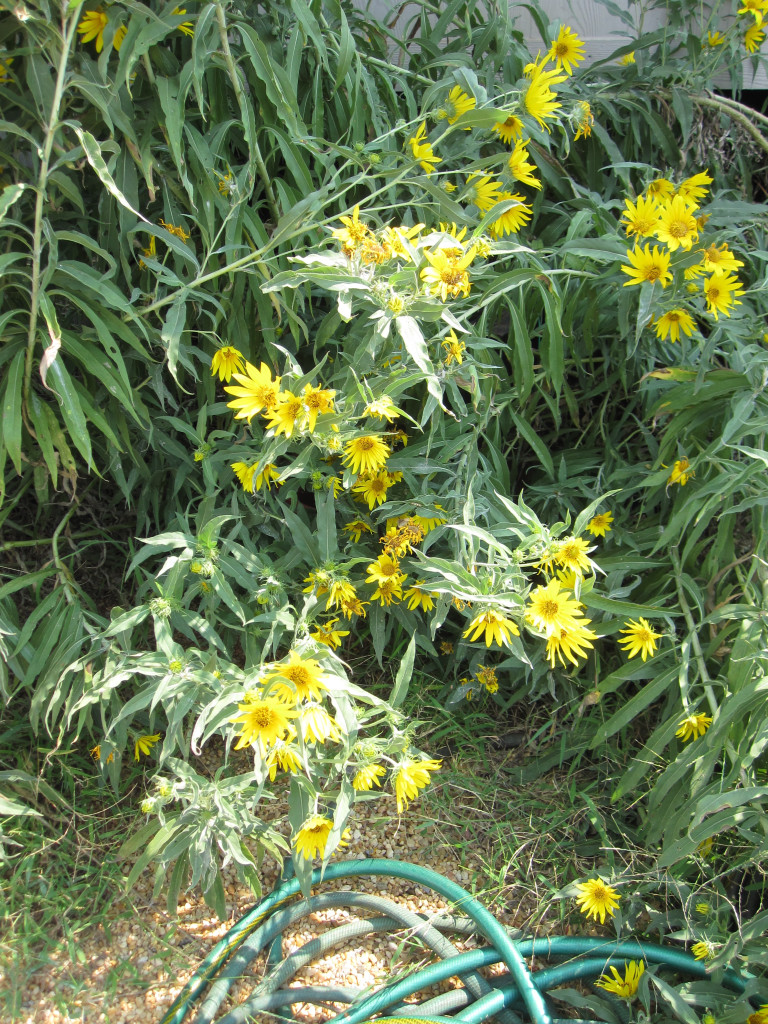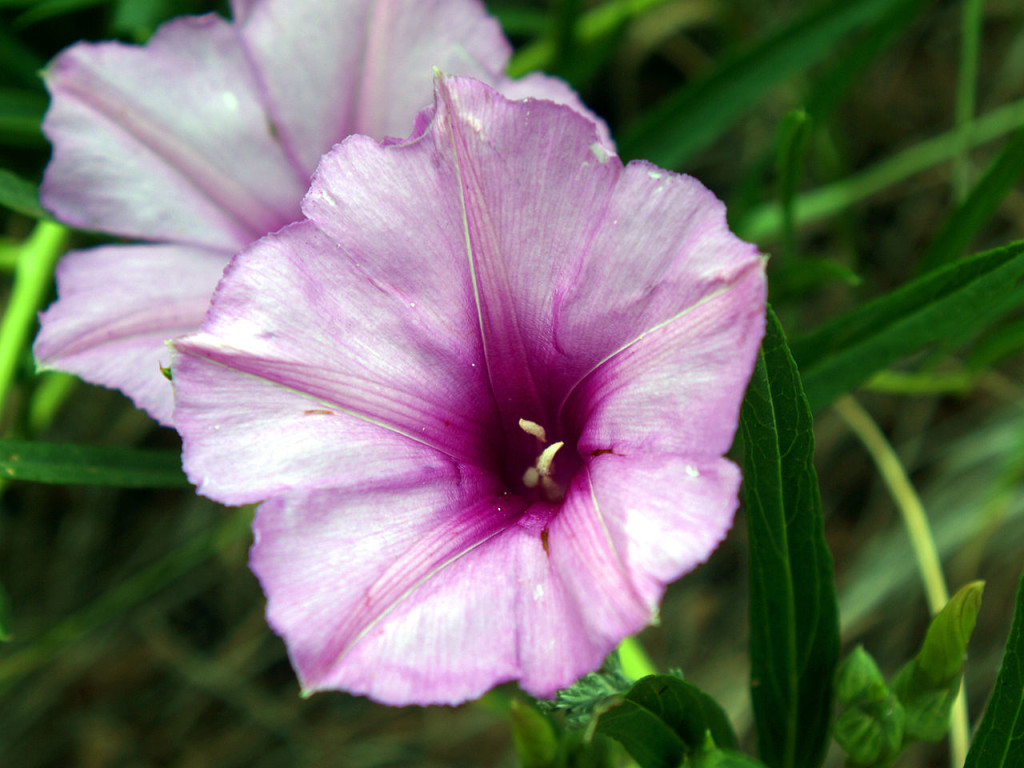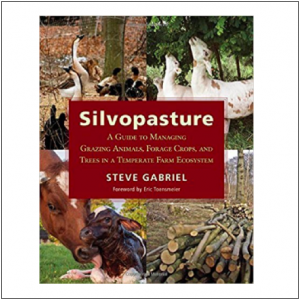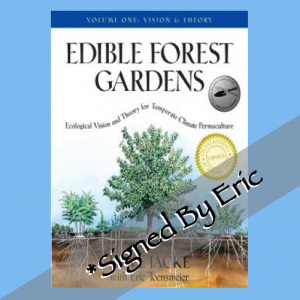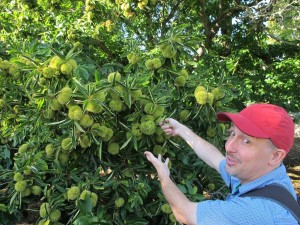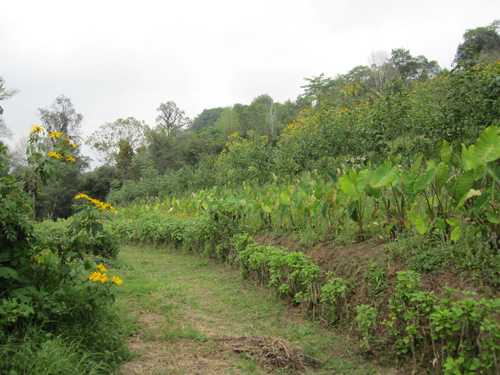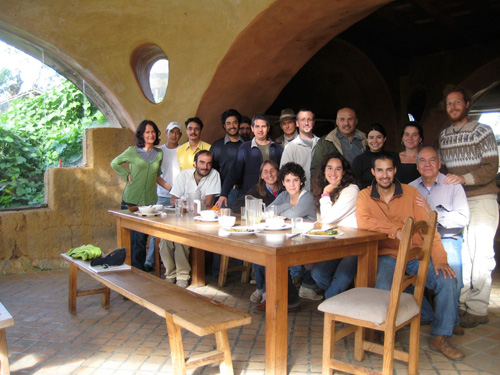Make sure to join our Mailing List.
One of the more challenging environments for food production is cold and arid. I’ve been investigating useful perennial plants for that climate for many years. A few years ago I purchased Robert Nold’s High and Dry: Gardening with Cold-Hardy Dryland Plants. Robert isn’t interested in growing these plants for food, but he has an incredible wealth of knowledge and years of experience in growing plants in his Littleton, Colorado garden with 10″/250mm of precipitation a year and -10F/-23C winter temperatures.
I was fortunate to be able to visit Robert and his garden with a class last year. It was fascinating to see his collection, and I was struck by the beauty of these tough high desert survivors.
Robert’s book is quite remarkable and offers great information on growing and propagating these species. He doesn’t say which are edible or otherwise useful though. This article is intended as a “key” to help permaculturists and edible landscapers utilize his book to select species for a cold, arid perennial food production system. I’ve already cross-indexed them with other resources for you. High and Dry also has much to say on the subject of gardening in cold, dry climates in general – for example, he reports that most of these plants grow in soils with little or no organic matter in their native habitats, and are more vulnerable to disease in compost-enriched soils.
This article features many of the useful species from High and Dry. Get a copy and read it to learn all about his experiences growing them. All of these species have survived Bob’s test conditions of 10″/250mm of rainfall a year and -10F/-23C. All are native to the western United States, and some to adjacent Canada and Mexico as well. Of course there are many other useful species, native and not, that are suited to this area. Growers in other cold, dry regions (particularly in Central Asia) may also want to grow some of these species.
My sense is that these might represent the things you grow farther from home, while close by you’d have water-loving crops like peaches and apples watered by greywater and roofwater (or plain old drip irrigation).


TREES
Few trees grow in the high and dry country, and fewer still are much use to us in the food forest. Here are some good ones recommended by Nold. Pinyons are slow to grow and don’t bear annually but can grow where nothing else will. Mesquites are delicious and nitrogen fixing. We could use people identifying and propagating good forms of oak, mesquite, and pinyon.
| Latin Name | Common Name | Uses | Functions |
| Cercocarpus ledifolius | mountain mahogany | nitrogen-fixer | |
| Pinus edulis, P. monophylla | pinyon pine | nuts | |
| Prosopis glandulosa | honeypod mesquite | staple pods, honey plant, coppiced firewood | nitrogen-fixer, fodder pods |
| Quercus emoryi, Q. hybrids, Q. undulata | “sweet” acorn oaks | ||
| Robinia neomexicana | New Mexico locust | edible flowers, firewood | nitrogen-fixer |

 New Mexico locust is a nitrogen-fixing, coppiced firewood plant. Sedalia, Colorado.
New Mexico locust is a nitrogen-fixing, coppiced firewood plant. Sedalia, Colorado.Cercocarpus ledifolius is a very tough nitrogen-fixer, handling arid conditions and -50F/-45C! Robert’s garden.



SHRUBS
This region excels in useful shrubs, including many edible berries and a large number of legume and non-legume nitrogen-fixers.
| Latin Name | Common Name | Uses | Functions |
| Amelanchier alnifolia, A. utahensis | serviceberry | berries | |
| Amorpha fruticosa, A. nana | false indigo | pesticide | nitrogen-fixer, contour hedgerow |
| Ceanothus fendleri, C. velutinus | snowbrush | nitrogen-fixer | |
| Cercocarpus montanus | mountain mahogany | nitrogen-fixer | |
| Elaeagnus commutata | silverberry | soap | nitrogen-fixer |
| Fallugia paradoxa | Apache plume | nitrogen-fixer | |
| Lycium pallidum | wolfberry | fruit (native goji) | |
| Prunus americana | American plum | fruit | |
| P. besseyi | sand cherry | fruit | |
| P. virginiana | chokecherry | fruit | |
| Purshia tridentata | bitterbrush | nitrogen-fixer | |
| Ribes aureum, R. cereum, R. odoratum | currants | fruit | |
| Shepherdia argentea, S. canadensis | buffalo berry | fruit (not fantastic), soap | nitrogen-fixer |




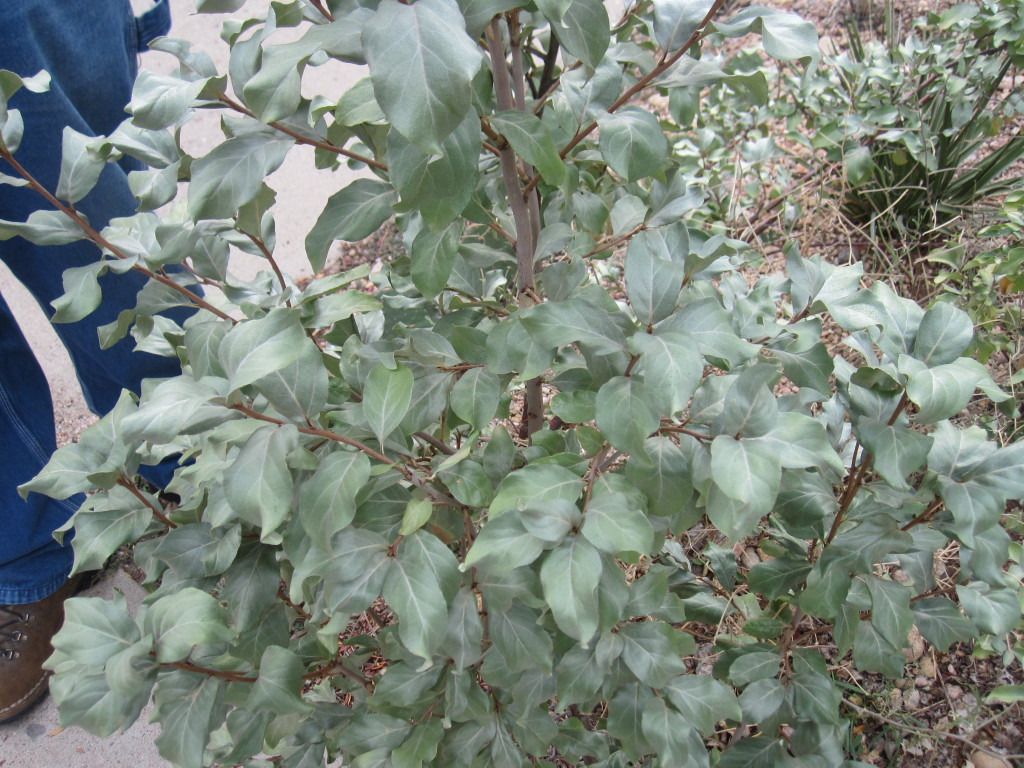




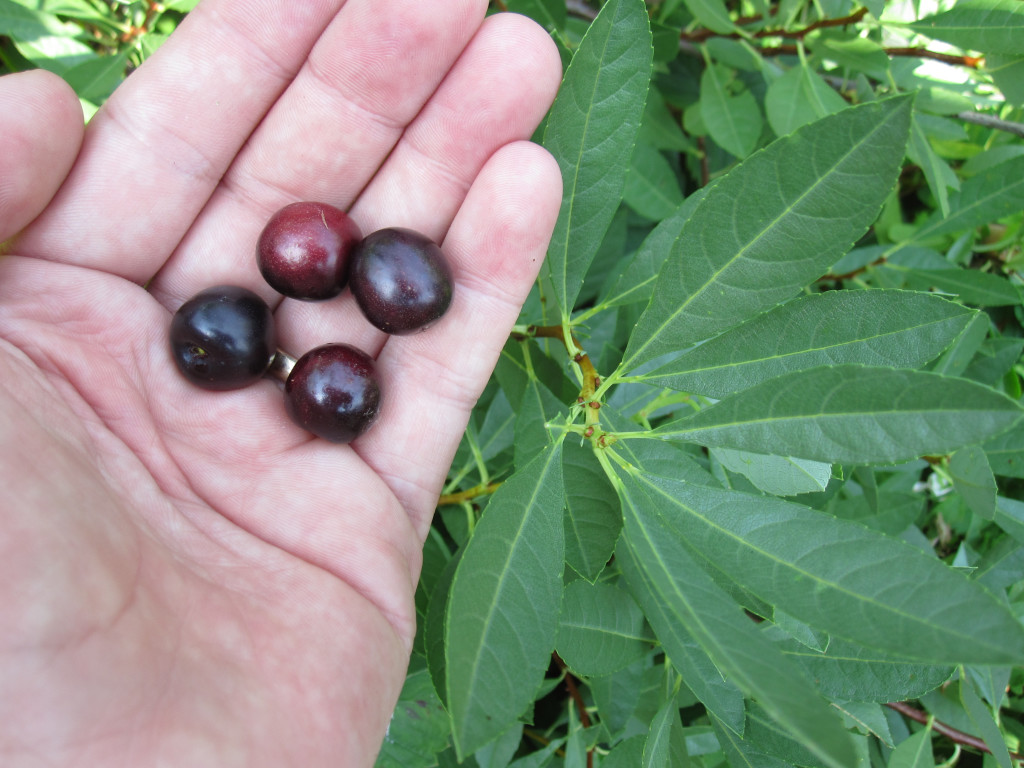



SUCCULENTS
This group includes cacti and “woody lilies” like agaves and yuccas. There are many useful species in this group. I’m not aware of any prickly pears with inedible fruit or pads, for example – though many are so small or spiny as to be not worth the trouble. A form of O. phaeacantha called “Mesa Sky” is noted for having particularly good fruit, while O. basilaris var. aurea is relatively spineless for nopale (edible cactus pad) production. I’m unaware of improved agaves or banana yuccas but would love to see people out there testing, selecting, and propagating them!
| Latin Name | Common Name | Uses | Functions |
| Agave parreyi | agave | swollen base cooked just before flowering | living fence |
| Cylindropuntia imbricata, C. whippleyi | cholla cacti | flowerbuds, fruit | living fence |
| Echinocereus engelmannii, E. stramineus | strawberry cacti | fruit | |
| Mammillaria heyderi, M. wrightii | pincushion cacti | fruit | |
| Opuntia basilaris, O. englemannii, O. fragilis, O. macrocentra, O. phaeacantha, O. polyacantha | prickly pear cacti | fruit, nopale vegetable pads | living fence (some) |
| Pediocactus simpsonii | hedgehog cacti | fruit | |
| Yucca baccatta | banana yucca | cooked fruit, fiber | living fence |




HERBACEOUS PLANTS
The region excels in edible roots. Though I’ve not included them here, Nold lists a hundred or so plants in the aster family, which attract beneficial insects.
| Latin Name | Common Name | Uses | Functions |
| Amorpha canescens | leadplant | tea | nitrogen-fixer |
| Brodiaea spp. | bulbs | ||
| Callirhoe involucrata | purple poppy-mallow | roots | groundcover |
| Calochortus spp. | Sego lily | roots | |
| Cucurbita foetidissima | buffalo gourd | seeds | groundcover |
| Dalea spp. | prairie clover | nitrogen-fixer | |
| Dichelostemma spp. | bulbs | ||
| Erigeron flagellaris | fleabane | attracts beneficial insects, groundcover | |
| Helianthus maximiliani | Maximilian sunflower | shoots, seeds | attract beneficial insects |
| Ipomoea leptophylla | manroot | roots | |
| Lewisia spp. | bitterroot | roots | |
| Lomatium spp. | biscuit roots | Roots | attract beneficial insects |
| Lupinus spp. | lupine | nitrogen-fixer | |
| Oryzopsis hymenoides | Indian ricegrass | seeds | |
| Phacelia tanacetifolia | scorpion weed | attracts beneficial insects |



